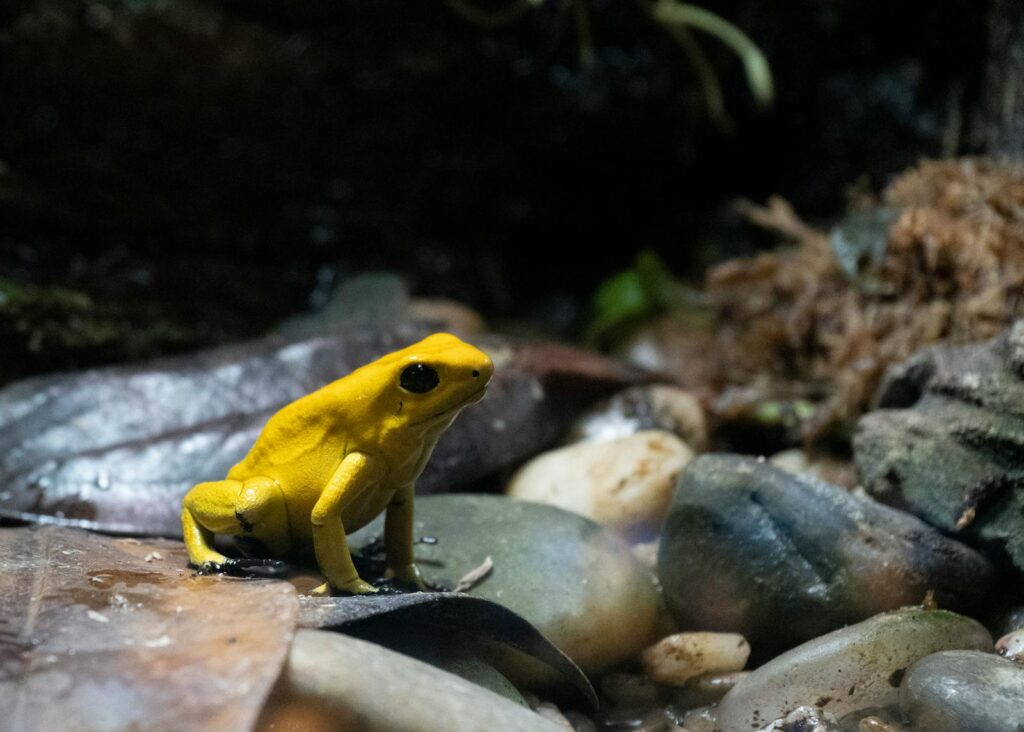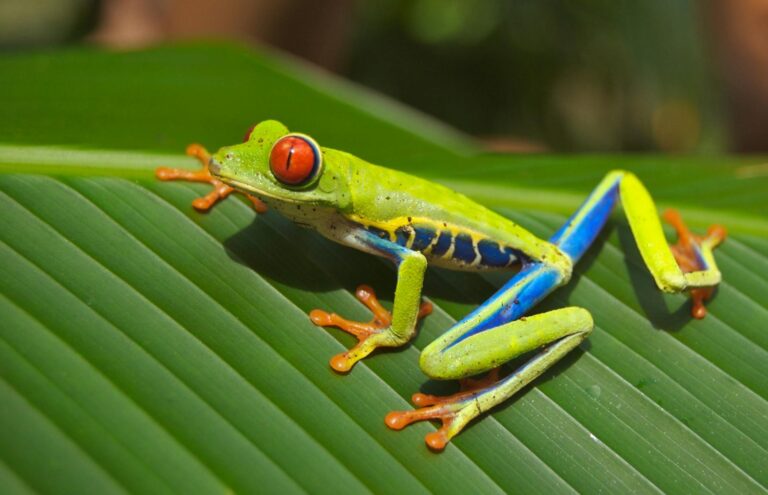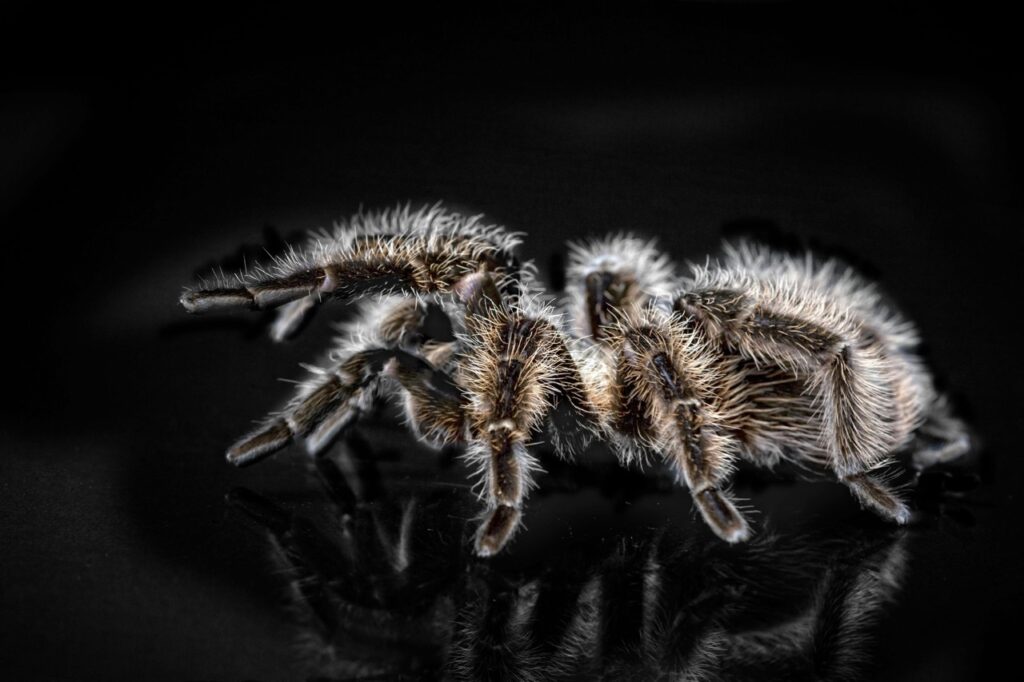Imagine a creature smaller than your palm, adorned with vibrant colors that could rival a tropical sunset. Now, picture that same tiny being capable of taking down a fully grown adult with its potent toxins. Welcome to the fascinating world of poison dart frogs! These diminutive amphibians have captivated scientists and nature enthusiasts alike with their striking appearance and deadly defenses. In this article, we’ll dive into five mind-blowing facts about poison dart frogs that will leave you in awe of these remarkable creatures.
1. Not All Poison Dart Frogs Are Lethal
When we hear “poison dart frog,” our minds often jump to images of deadly creatures that can kill with a single touch. However, the truth is far more nuanced. While some species of poison dart frogs are indeed highly toxic, many others pose little to no threat to humans.
The Spectrum of Toxicity
Poison dart frogs belong to the family Dendrobatidae, which includes over 170 species. Among these, only a handful are considered dangerous to humans. The most toxic species, the golden poison frog (Phyllobates terribilis), carries enough venom to kill up to 20 adult humans. On the other hand, many species in the genus Dendrobates are relatively harmless, with toxins that may cause mild irritation at most.
Environmental Factors
Interestingly, the toxicity of poison dart frogs is not innate but rather acquired through their diet. In captivity, these frogs often lose their toxicity as they no longer consume the specific insects that contribute to their venomous nature in the wild. This fact highlights the intricate relationship between these amphibians and their natural habitat.
2. Their Vibrant Colors Serve as a Warning

The stunning array of colors displayed by poison dart frogs is not just for show. These brilliant hues serve a crucial purpose in the frog’s survival strategy.
Aposematic Coloration
The vivid patterns and colors of poison dart frogs are examples of aposematic coloration, a biological phenomenon where animals use bright colors to warn potential predators of their toxicity. This visual deterrent is an effective defense mechanism that helps these small frogs avoid becoming prey.
Color Variations
Different species of poison dart frogs exhibit a wide range of colors, including bright blues, yellows, reds, and greens. Some even display intricate patterns that make them look like living works of art. The blue poison dart frog (Dendrobates azureus), for instance, sports a striking electric blue coloration that seems almost unreal.
3. Poison Dart Frogs Are Excellent Parents
Despite their toxic reputation, poison dart frogs exhibit remarkable parenting behaviors that set them apart from many other amphibian species.
Tadpole Transportation
After mating, female poison dart frogs lay their eggs on land. Once the tadpoles hatch, the male frog takes on the responsibility of transporting them to water. He allows the tadpoles to wriggle onto his back and then carries them to small pools of water, often found in the axils of bromeliad plants.
Ongoing Care
The parental care doesn’t end with transportation. Some species of poison dart frogs continue to care for their tadpoles by returning regularly to lay unfertilized eggs as a food source. This level of parental investment is rare among amphibians and contributes to the survival of their offspring in challenging rainforest environments.
Did you know…
Poison dart frogs get their name from the indigenous people of South America who used their toxins to coat the tips of blow darts for hunting? This practice, however, was limited to only a few of the most toxic species.
4. They’re Not Just Found in Rainforests
When we think of poison dart frogs, we often picture them hopping through lush, tropical rainforests. While many species do indeed call the rainforest home, these adaptable amphibians can be found in a variety of habitats.
Diverse Habitats
Some poison dart frog species have been found in cloud forests, lowland forests, and even in areas near human settlements. The strawberry poison frog (Oophaga pumilio), for example, has been observed thriving in banana plantations in Costa Rica.
Adaptability
This adaptability to different environments showcases the resilience of poison dart frogs. It also highlights the importance of preserving various types of habitats to ensure the survival of these unique species.
5. Poison Dart Frogs Are Helping Medical Research
The very toxins that make poison dart frogs dangerous are now proving to be valuable in medical research, offering potential breakthroughs in pain management and other areas of medicine.
Pain Management Potential
Scientists have discovered that the toxins produced by some poison dart frog species contain compounds that could lead to the development of new pain medications. These compounds work by targeting specific pain receptors in a way that’s different from current pain medications, potentially offering more effective and less addictive alternatives.
Antibiotic Properties
Some of the alkaloids found in poison dart frog toxins have shown promising antibiotic properties. As the world faces increasing challenges with antibiotic-resistant bacteria, these compounds could play a crucial role in developing new treatments for infections.
The world of poison dart frogs is filled with surprises, from their parenting skills to their potential contributions to medical science. These tiny amphibians remind us of the incredible diversity and complexity of life on our planet. As we continue to study and understand these fascinating creatures, we not only gain insight into the natural world but also uncover potential solutions to human challenges.
Next time you hear about poison dart frogs, remember that there’s much more to these colorful amphibians than meets the eye. They’re not just toxic creatures to be feared but complex, adaptable, and potentially beneficial species that deserve our admiration and protection. Share this article with friends and family to spread awareness about these remarkable frogs and the importance of preserving their habitats for future generations to study and enjoy.
Tags: Amphibian toxicity, Frog species diversity, Rainforest wildlife


